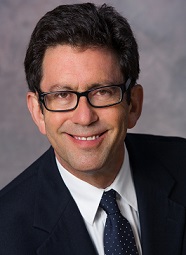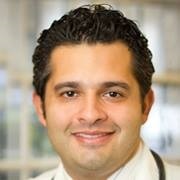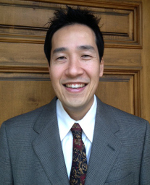Seven gastroenterologists from across the United States share how they are using benchmarking to improve colonoscopy quality.
Ask a Gastroenterologist is a weekly series of questions posed to gastroenterologists around the country on business and clinical issues affecting the field of gastroenterology. We invite all GI physicians to submit responses. This week's question: What is your approach to leadership in the gastroenterology field?
Please submit responses to Carrie Pallardy at cpallardy@beckershealthcare.com by Thursday, April 3, at 5 p.m. CST.
 Whitney Jones, MD, practicing gastroenterologist, clinical professor of medicine at University of Louisville, founder of the Colon Cancer Prevention Project: At Premier Surgery Center of Louisville, an affiliate of Surgical Care Affiliates, we are serious about colonoscopy quality. Several items are benchmarked on a regular basis to assist physicians in ongoing improvement. Specifically for colonoscopy, we automatically collect and report through our electronic reporting system withdrawal times, successful cecal intubation and documentation of cecal landmarks and prep quality. With very few exceptions all physicians are using either same day or split dose prep regimens. In the last two quarters we have successfully partnered with our pathology provider to generate adenoma detection rates. All of these are reported in a blinded fashion to physicians performing colonoscopy at our center, partners and non-partners alike. We do not yet have enough longitudinal data to see trends based on ADR feedback.
Whitney Jones, MD, practicing gastroenterologist, clinical professor of medicine at University of Louisville, founder of the Colon Cancer Prevention Project: At Premier Surgery Center of Louisville, an affiliate of Surgical Care Affiliates, we are serious about colonoscopy quality. Several items are benchmarked on a regular basis to assist physicians in ongoing improvement. Specifically for colonoscopy, we automatically collect and report through our electronic reporting system withdrawal times, successful cecal intubation and documentation of cecal landmarks and prep quality. With very few exceptions all physicians are using either same day or split dose prep regimens. In the last two quarters we have successfully partnered with our pathology provider to generate adenoma detection rates. All of these are reported in a blinded fashion to physicians performing colonoscopy at our center, partners and non-partners alike. We do not yet have enough longitudinal data to see trends based on ADR feedback.
In working with our network partner, KentuckyOne Health, our goal in 2014 is to assure all logical points of service for primary care providers are accurately assessing colon cancer risk and making either referrals for colonoscopy or stool based FIT testing. We are in the process of developing a quality colonoscopy standard across the entire statewide standard network for the above benchmarks as well in order for an endoscopist to participate in the network generated colon cancer screening referrals.
Through these two complimentary measures (primary care and quality colonoscopy) we are internally working toward adopting and meeting the 80 percent screened by 2018 goal of the National Colorectal Cancer Roundtable.
William Katkov, MD, Providence Saint John's Health Center, Santa Monica, Calif.: Benchmarking in colonoscopy has been driven by regulatory requirements. The two most common metrics are polyp detection rates and withdrawal time after cecal intubation. These are evidence-based measures linked to optimal rates of polyp and cancer detection, and thereby provide a reasonable assessment of quality.
and withdrawal time after cecal intubation. These are evidence-based measures linked to optimal rates of polyp and cancer detection, and thereby provide a reasonable assessment of quality.
 Shawn Khodadadianm, MD, Manhattan Gastroenterology, New York: There is an increased emphasis on the quality of healthcare in general and in the quality of screening procedures in particular. There are several important benchmarks for which data can be collected during a colonoscopy, which include cecal intubation rates, colonoscopy withdrawal times, as well as adenoma detection rates. These benchmarks are indicators of high quality colonoscopy and striving to reach and surpass benchmarks may ultimately decrease overall morbidity and mortality by ensuring quality examinations for our patients. Individuals and groups can compare their collected benchmark data to national averages, investigate opportunities for education and identify areas for improvement.
Shawn Khodadadianm, MD, Manhattan Gastroenterology, New York: There is an increased emphasis on the quality of healthcare in general and in the quality of screening procedures in particular. There are several important benchmarks for which data can be collected during a colonoscopy, which include cecal intubation rates, colonoscopy withdrawal times, as well as adenoma detection rates. These benchmarks are indicators of high quality colonoscopy and striving to reach and surpass benchmarks may ultimately decrease overall morbidity and mortality by ensuring quality examinations for our patients. Individuals and groups can compare their collected benchmark data to national averages, investigate opportunities for education and identify areas for improvement.
Chris Lascarides, MD, Stony Brook University Digestive Disorders Institute, East Setauket, N.Y.: Here at Stony Brook Medicine, we do several things.
1. We track cecal intubation rate for each and every colonoscopy performed at Stony Brook. The data are then broken down to reflect the rates for each and every physician performing colonoscopies. This is the percentage of colonoscopies where the physician is actually able to get to the end of the colon, the cecum. It is a reflection on their technical skill in completing a colonoscopy.
2. We measure the withdrawal time, which is the time taken by the physician to examine the colonic mucosa while withdrawing the scope from the colon. This is also measured for each physician and measures how carefully they observe the mucosa while withdrawing the scope from the patient.
they observe the mucosa while withdrawing the scope from the patient.
3. The adenoma detection rate is also measured. This is the percentage of screening colonoscopies where an adenoma is detected. This requires our quality assurance staff to go through the colonoscopy records by hand to identify those colonoscopies where the indication was done for screening purposes. They then have to cross reference the chart with the pathology records to make sure that polyps removed were in fact adenomas. This is a marker for how observant our physicians are with regards to examining the entire colonic mucosa.
Physicians are made aware of these measures and aim to improve their performance to better these statistics and their overall quality of care.
 Gilbert Simoni, MD, Los Robles Hospital, Thousand Oaks, Calif.: By having introduced adenoma detection rate to Los Robles Hospital's GI Department, having my colleagues adopt it for both inpatient and outpatient settings and having our pathologists help us with the reporting.
Gilbert Simoni, MD, Los Robles Hospital, Thousand Oaks, Calif.: By having introduced adenoma detection rate to Los Robles Hospital's GI Department, having my colleagues adopt it for both inpatient and outpatient settings and having our pathologists help us with the reporting.
Patrick Takahashi, MD, Chief Medical Information Officer, Chief of Gastroenterology Section, St. Vincent Medical Center, Los Angeles: We are utilizing many benchmarks to improve the quality of colonoscopy for our patients. In my practice, the following serve as some good examples which I follow for quality purposes. These benchmarks are not difficult to document, yet assist to make every examination performed more uniform. These measures help to hold endoscopists to the proper quality and standard of care expected by our patients.
1. Cecal intubation rates
2. Colonoscopy prep quality
3. Scope withdrawal time
4. Percentage of patients with adverse event within two days of the procedure
5. Documentation of follow-up colonoscopy interval
 Richard Zelner, MD, Orange Coast Memorial Medical Center, Fountain Valley, Calif.: The most significant benchmarks we are currently utilizing to improve the quality of colonoscopy are: quality of the prep and the colonoscopy pullout time from the cecum to completion of the procedure In the future we may be reviewing the percentage of colonoscopies in which adenomatous polyps are found.
Richard Zelner, MD, Orange Coast Memorial Medical Center, Fountain Valley, Calif.: The most significant benchmarks we are currently utilizing to improve the quality of colonoscopy are: quality of the prep and the colonoscopy pullout time from the cecum to completion of the procedure In the future we may be reviewing the percentage of colonoscopies in which adenomatous polyps are found.
Ask a Gastroenterologist is a weekly series of questions posed to gastroenterologists around the country on business and clinical issues affecting the field of gastroenterology. We invite all GI physicians to submit responses. This week's question: What is your approach to leadership in the gastroenterology field?
Please submit responses to Carrie Pallardy at cpallardy@beckershealthcare.com by Thursday, April 3, at 5 p.m. CST.
 Whitney Jones, MD, practicing gastroenterologist, clinical professor of medicine at University of Louisville, founder of the Colon Cancer Prevention Project: At Premier Surgery Center of Louisville, an affiliate of Surgical Care Affiliates, we are serious about colonoscopy quality. Several items are benchmarked on a regular basis to assist physicians in ongoing improvement. Specifically for colonoscopy, we automatically collect and report through our electronic reporting system withdrawal times, successful cecal intubation and documentation of cecal landmarks and prep quality. With very few exceptions all physicians are using either same day or split dose prep regimens. In the last two quarters we have successfully partnered with our pathology provider to generate adenoma detection rates. All of these are reported in a blinded fashion to physicians performing colonoscopy at our center, partners and non-partners alike. We do not yet have enough longitudinal data to see trends based on ADR feedback.
Whitney Jones, MD, practicing gastroenterologist, clinical professor of medicine at University of Louisville, founder of the Colon Cancer Prevention Project: At Premier Surgery Center of Louisville, an affiliate of Surgical Care Affiliates, we are serious about colonoscopy quality. Several items are benchmarked on a regular basis to assist physicians in ongoing improvement. Specifically for colonoscopy, we automatically collect and report through our electronic reporting system withdrawal times, successful cecal intubation and documentation of cecal landmarks and prep quality. With very few exceptions all physicians are using either same day or split dose prep regimens. In the last two quarters we have successfully partnered with our pathology provider to generate adenoma detection rates. All of these are reported in a blinded fashion to physicians performing colonoscopy at our center, partners and non-partners alike. We do not yet have enough longitudinal data to see trends based on ADR feedback. In working with our network partner, KentuckyOne Health, our goal in 2014 is to assure all logical points of service for primary care providers are accurately assessing colon cancer risk and making either referrals for colonoscopy or stool based FIT testing. We are in the process of developing a quality colonoscopy standard across the entire statewide standard network for the above benchmarks as well in order for an endoscopist to participate in the network generated colon cancer screening referrals.
Through these two complimentary measures (primary care and quality colonoscopy) we are internally working toward adopting and meeting the 80 percent screened by 2018 goal of the National Colorectal Cancer Roundtable.
William Katkov, MD, Providence Saint John's Health Center, Santa Monica, Calif.: Benchmarking in colonoscopy has been driven by regulatory requirements. The two most common metrics are polyp detection rates
 and withdrawal time after cecal intubation. These are evidence-based measures linked to optimal rates of polyp and cancer detection, and thereby provide a reasonable assessment of quality.
and withdrawal time after cecal intubation. These are evidence-based measures linked to optimal rates of polyp and cancer detection, and thereby provide a reasonable assessment of quality. Shawn Khodadadianm, MD, Manhattan Gastroenterology, New York: There is an increased emphasis on the quality of healthcare in general and in the quality of screening procedures in particular. There are several important benchmarks for which data can be collected during a colonoscopy, which include cecal intubation rates, colonoscopy withdrawal times, as well as adenoma detection rates. These benchmarks are indicators of high quality colonoscopy and striving to reach and surpass benchmarks may ultimately decrease overall morbidity and mortality by ensuring quality examinations for our patients. Individuals and groups can compare their collected benchmark data to national averages, investigate opportunities for education and identify areas for improvement.
Shawn Khodadadianm, MD, Manhattan Gastroenterology, New York: There is an increased emphasis on the quality of healthcare in general and in the quality of screening procedures in particular. There are several important benchmarks for which data can be collected during a colonoscopy, which include cecal intubation rates, colonoscopy withdrawal times, as well as adenoma detection rates. These benchmarks are indicators of high quality colonoscopy and striving to reach and surpass benchmarks may ultimately decrease overall morbidity and mortality by ensuring quality examinations for our patients. Individuals and groups can compare their collected benchmark data to national averages, investigate opportunities for education and identify areas for improvement.Chris Lascarides, MD, Stony Brook University Digestive Disorders Institute, East Setauket, N.Y.: Here at Stony Brook Medicine, we do several things.
1. We track cecal intubation rate for each and every colonoscopy performed at Stony Brook. The data are then broken down to reflect the rates for each and every physician performing colonoscopies. This is the percentage of colonoscopies where the physician is actually able to get to the end of the colon, the cecum. It is a reflection on their technical skill in completing a colonoscopy.
2. We measure the withdrawal time, which is the time taken by the physician to examine the colonic mucosa while withdrawing the scope from the colon. This is also measured for each physician and measures how carefully
 they observe the mucosa while withdrawing the scope from the patient.
they observe the mucosa while withdrawing the scope from the patient.3. The adenoma detection rate is also measured. This is the percentage of screening colonoscopies where an adenoma is detected. This requires our quality assurance staff to go through the colonoscopy records by hand to identify those colonoscopies where the indication was done for screening purposes. They then have to cross reference the chart with the pathology records to make sure that polyps removed were in fact adenomas. This is a marker for how observant our physicians are with regards to examining the entire colonic mucosa.
Physicians are made aware of these measures and aim to improve their performance to better these statistics and their overall quality of care.
 Gilbert Simoni, MD, Los Robles Hospital, Thousand Oaks, Calif.: By having introduced adenoma detection rate to Los Robles Hospital's GI Department, having my colleagues adopt it for both inpatient and outpatient settings and having our pathologists help us with the reporting.
Gilbert Simoni, MD, Los Robles Hospital, Thousand Oaks, Calif.: By having introduced adenoma detection rate to Los Robles Hospital's GI Department, having my colleagues adopt it for both inpatient and outpatient settings and having our pathologists help us with the reporting.Patrick Takahashi, MD, Chief Medical Information Officer, Chief of Gastroenterology Section, St. Vincent Medical Center, Los Angeles: We are utilizing many benchmarks to improve the quality of colonoscopy for our patients. In my practice, the following serve as some good examples which I follow for quality purposes. These benchmarks are not difficult to document, yet assist to make every examination performed more uniform. These measures help to hold endoscopists to the proper quality and standard of care expected by our patients.
1. Cecal intubation rates
2. Colonoscopy prep quality

3. Scope withdrawal time
4. Percentage of patients with adverse event within two days of the procedure
5. Documentation of follow-up colonoscopy interval
 Richard Zelner, MD, Orange Coast Memorial Medical Center, Fountain Valley, Calif.: The most significant benchmarks we are currently utilizing to improve the quality of colonoscopy are: quality of the prep and the colonoscopy pullout time from the cecum to completion of the procedure In the future we may be reviewing the percentage of colonoscopies in which adenomatous polyps are found.
Richard Zelner, MD, Orange Coast Memorial Medical Center, Fountain Valley, Calif.: The most significant benchmarks we are currently utilizing to improve the quality of colonoscopy are: quality of the prep and the colonoscopy pullout time from the cecum to completion of the procedure In the future we may be reviewing the percentage of colonoscopies in which adenomatous polyps are found.